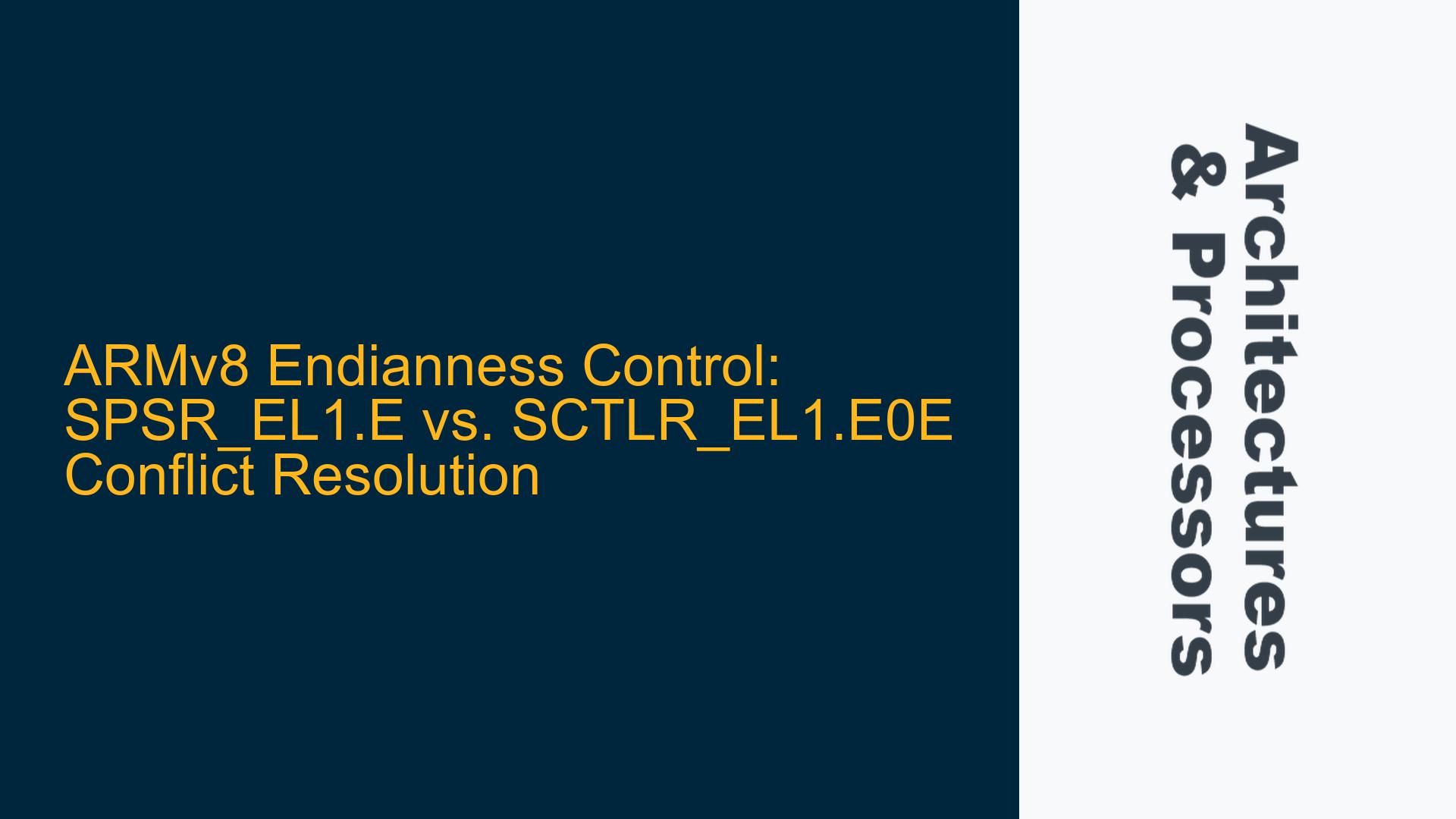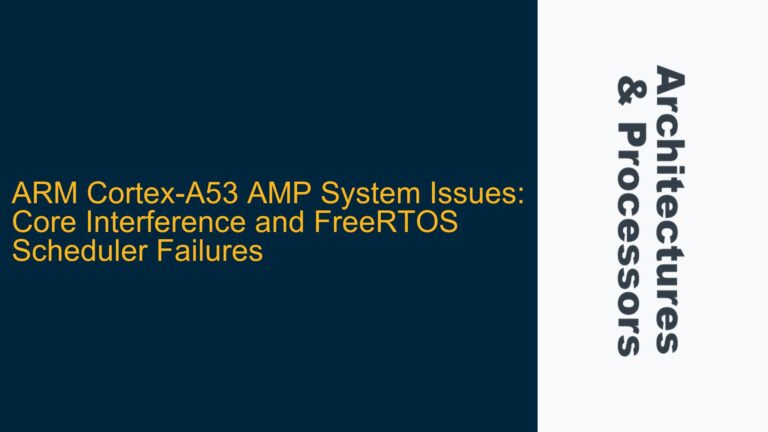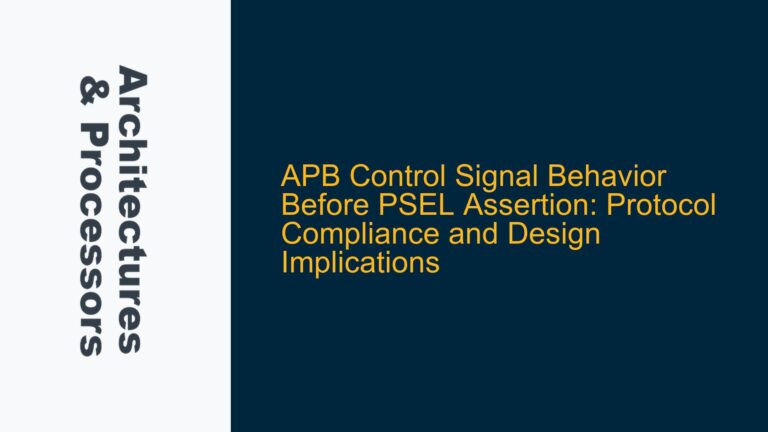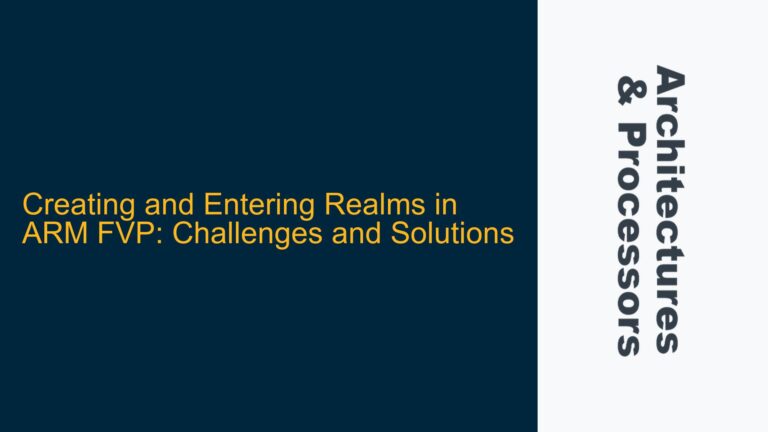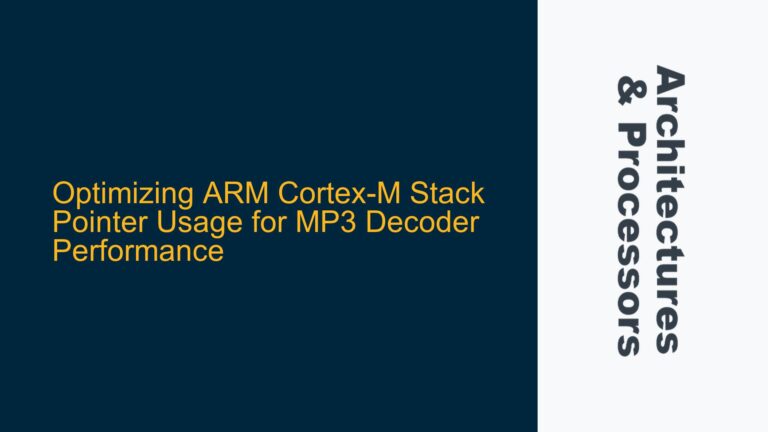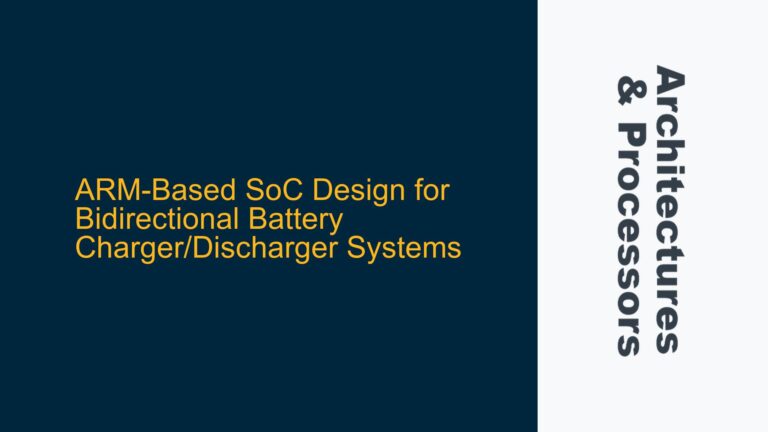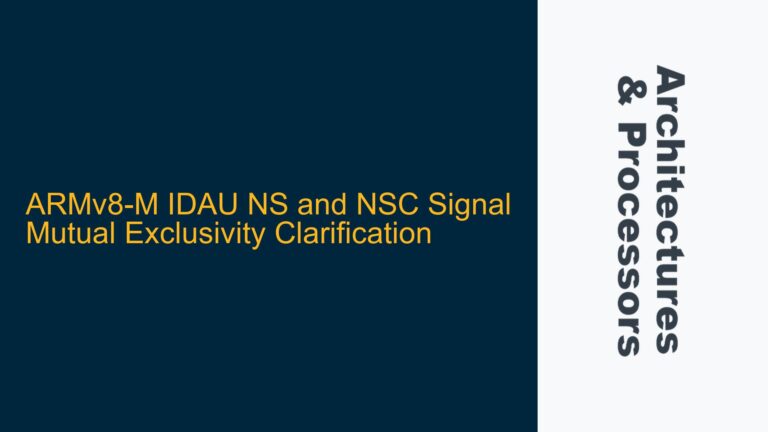ARMv8 Endianness Control Mechanisms in EL0 Data Access
In ARMv8 architectures, endianness control is a critical aspect of ensuring correct data access and execution, particularly when transitioning between exception levels (ELs) and operating states (AArch32 and AArch64). The endianness of data accesses at Exception Level 0 (EL0) is influenced by two primary registers: SPSR_EL1 (Saved Program Status Register at EL1) and SCTLR_EL1 (System Control Register at EL1). Specifically, the SPSR_EL1.E bit and the SCTLR_EL1.E0E bit play pivotal roles in determining the endianness configuration for EL0. However, their interaction can lead to confusion, especially when their configurations conflict. This post delves into the mechanisms of these registers, their interplay, and how to resolve potential conflicts.
SPSR_EL1.E and SCTLR_EL1.E0E: Roles and Interactions
The SPSR_EL1.E bit controls the endianness of the processor state when an exception return operation is executed in EL1. This bit is part of the Saved Program Status Register (SPSR), which stores the processor state (PSTATE) at the time an exception is taken. When an exception is taken from AArch32 state, the SPSR_EL1.E bit is copied into the PSTATE.E bit upon exception return, thereby determining the endianness of the execution state after the return. This mechanism ensures that the endianness is preserved across exception handling.
On the other hand, the SCTLR_EL1.E0E bit directly controls the endianness of data accesses at EL0. The System Control Register (SCTLR) is a global configuration register that governs various system behaviors, including memory management, cache control, and endianness. The E0E bit specifically dictates whether EL0 data accesses are performed in little-endian or big-endian mode, independent of the execution state of higher exception levels.
The potential for conflict arises when the SPSR_EL1.E bit and the SCTLR_EL1.E0E bit are configured differently. For instance, if SPSR_EL1.E is set to big-endian (1) and SCTLR_EL1.E0E is set to little-endian (0), the processor must resolve this discrepancy to ensure consistent behavior. Understanding how the ARMv8 architecture handles such conflicts is essential for system designers and firmware developers.
Conflict Scenarios and Architectural Behavior
When the SPSR_EL1.E bit and the SCTLR_EL1.E0E bit are configured with conflicting endianness settings, the ARMv8 architecture defines a clear precedence and behavior to resolve the conflict. The key to understanding this behavior lies in the distinction between execution state endianness (controlled by SPSR_EL1.E) and data access endianness (controlled by SCTLR_EL1.E0E).
In AArch32 state, the PSTATE.E bit, which is derived from SPSR_EL1.E upon exception return, determines the endianness of the execution state. This means that instructions and data accesses within the same execution state will adhere to the endianness specified by PSTATE.E. However, the SCTLR_EL1.E0E bit specifically governs data accesses at EL0, regardless of the execution state endianness. This separation allows for mixed-endian configurations, where the execution state and data accesses can operate with different endianness settings.
If SPSR_EL1.E and SCTLR_EL1.E0E are configured with conflicting values, the processor will prioritize the SCTLR_EL1.E0E bit for EL0 data accesses. This means that even if the execution state is set to big-endian (via SPSR_EL1.E), the data accesses at EL0 will follow the endianness specified by SCTLR_EL1.E0E. This behavior ensures that data accesses at EL0 remain consistent and predictable, even in the presence of conflicting configurations.
For example, consider a scenario where SPSR_EL1.E is set to 1 (big-endian) and SCTLR_EL1.E0E is set to 0 (little-endian). In this case, the execution state will operate in big-endian mode, but all data accesses at EL0 will be performed in little-endian mode. This separation is particularly useful in systems where different components or software layers require distinct endianness configurations.
Resolving Endianness Conflicts: Best Practices and Implementation
To avoid unintended behavior and ensure consistent endianness configurations, system designers and firmware developers should adhere to the following best practices when configuring SPSR_EL1.E and SCTLR_EL1.E0E:
-
Consistent Configuration: Ensure that the SPSR_EL1.E bit and the SCTLR_EL1.E0E bit are configured consistently to avoid conflicts. If the execution state and data accesses at EL0 are intended to operate with the same endianness, both bits should be set to the same value.
-
Explicit Initialization: During system initialization, explicitly configure both SPSR_EL1.E and SCTLR_EL1.E0E to the desired endianness settings. This prevents any ambiguity or unintended behavior resulting from default or residual values.
-
Exception Handling: When handling exceptions, ensure that the SPSR_EL1.E bit is correctly set to reflect the desired endianness for the exception return. This is particularly important when transitioning between AArch32 and AArch64 states, as the endianness behavior may differ.
-
Testing and Validation: Thoroughly test and validate the endianness configuration in all possible scenarios, including exception handling, state transitions, and mixed-endian configurations. This helps identify and resolve any potential issues before deployment.
-
Documentation: Clearly document the endianness configuration and the rationale behind the chosen settings. This ensures that other developers and maintainers understand the system’s behavior and can make informed decisions when modifying or extending the system.
By following these best practices, developers can ensure that the endianness configuration in their ARMv8-based systems is consistent, predictable, and aligned with the intended behavior.
Detailed Troubleshooting Steps for Endianness Configuration Issues
When encountering issues related to endianness configuration in ARMv8 systems, the following troubleshooting steps can help identify and resolve the problem:
-
Verify Register Settings: Check the current values of SPSR_EL1.E and SCTLR_EL1.E0E to ensure they are configured as intended. Use a debugger or system monitor to inspect the register values at runtime.
-
Check Exception Handling: Review the exception handling code to ensure that the SPSR_EL1.E bit is correctly set during exception entry and exit. Verify that the endianness is preserved across exception transitions.
-
Inspect State Transitions: Examine the state transitions between AArch32 and AArch64 to ensure that the endianness configuration is correctly maintained. Pay particular attention to the PSTATE.E bit and its relationship with SPSR_EL1.E.
-
Test Data Accesses: Perform targeted tests to verify the endianness of data accesses at EL0. Use known data patterns and compare the results to ensure that the data accesses adhere to the expected endianness.
-
Review Documentation: Consult the ARM Architecture Reference Manual (ARM ARM) and the specific processor documentation to confirm the expected behavior of the SPSR_EL1.E and SCTLR_EL1.E0E bits. Ensure that the implementation aligns with the architectural specifications.
-
Debug Mixed-Endian Scenarios: If the system employs mixed-endian configurations, thoroughly test and debug the interactions between different endianness settings. Ensure that the separation between execution state endianness and data access endianness is correctly implemented.
-
Update Firmware: If a firmware update is available, consider applying it to address any known issues or bugs related to endianness configuration. Ensure that the update is thoroughly tested before deployment.
-
Consult ARM Support: If the issue persists, consider reaching out to ARM support or the broader ARM community for assistance. Provide detailed information about the problem, including register settings, code snippets, and test results.
By systematically following these troubleshooting steps, developers can identify and resolve endianness configuration issues in their ARMv8 systems, ensuring reliable and consistent operation.
Conclusion
Endianness control in ARMv8 architectures is a nuanced and critical aspect of system design, particularly when dealing with multiple exception levels and operating states. The SPSR_EL1.E and SCTLR_EL1.E0E bits play central roles in determining the endianness of execution states and data accesses, respectively. Understanding their interactions and resolving potential conflicts is essential for ensuring correct system behavior.
By adhering to best practices, thoroughly testing configurations, and following detailed troubleshooting steps, developers can effectively manage endianness in their ARMv8-based systems. This not only prevents subtle hardware-software interaction issues but also optimizes performance and reliability across diverse application scenarios.
